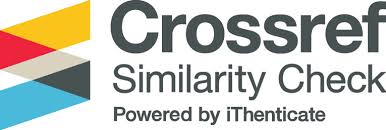Antifungal Activity Test of The Combination of Various Plants Against the Pityrosporum ovale
Abstract
One cause of tinea versicolor is a fungal Pityrosporum ovale which colonizes on the skin. Previous research has examined the red betel leaves, beluntas leaves and cabbage leaves as antifungal against Pityrosporum ovale. This study aims to determine the effectiveness of the above herbs in the form of single or various combinations to inhibit the growth of the fungus Pityrosporum ovale by in vitro method. The extraction method was performed by infudation on the red betel leaf powder, beluntas leaves and cabbage leaves. The results of infudation are then made in a combination of (1:1), (1:3) and (3:1). The antifungal test with dilution method was then performed on the single and the combination extract. Dilution method was performed by making a series of dilutions in concentrations of 50%, 25%, 12.5%, 6.25%, 3.13%, 1.56%, 0.78%, 0.39%, 0.19%, 0.09%. The results showed that the MKC (minimum killing concentration) of red betel leaves, beluntas leaves and cabbage leaves, combination of red betel leaves and beluntas leaves (1:1), (1:3) and (3:1), combination of red betel leaves and cabbage leaves (1:1), (1:3) and (3:1) were 50%, 25%, 25%, 25%, 12.5%, 50%, 50%, 12.5%, 25% respectively. The best combination were red betel leaves and beluntas leaves infusions with a ratio of (1:3) and the combination red betel leaves and cabbage leaves infusions with a ratio of (1:3).












